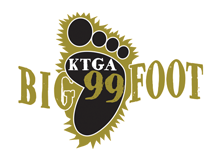August 30, 2022 |
Several hundred ranchers, landowners and others from across the state attended the Wyoming Stock Growers Land Trust Annual Roundup BBQ and Fundraiser held in Saratoga on Saturday. About 300 people turned out to enjoy the food, music, and auction.
Among the attendees was the WGSLT Executive Director Jessica Crowder at the event. Crowder served as a policy advisor for former Wyoming Governor Matt Mead, prior to being selected to head the organization in January of last year.
Crowder said that the Wyoming Stock Growers Land Trust (WSGLT) forms conservation easement agreements with landowners to safeguard Wyoming’s agricultural lands from future non-ag development. Whether housing or industrial.
A conservation easement is a legally binding agreement between a landowner and the WSGLT that ensures the land won’t ever be developed.
Jack Berger, who hosted Saturday’s event at his ranch South of Saratoga, on Spring Creek, says the agreements make sure existing ranch-land is preserved for agricultural use only.
Over the past 21 years, the WSGLT has partnered with 79 families to protect over 285,000 acres of Wyoming ranch land. Much of that protected land is right here in the Upper Platte River Valley. Crowder says that the WSGLT got its start in the Valley.
One of those people who have deeded their land to the Wyoming Stock Growers Land Trust is Shane Mowry. The fifth-generation rancher did not want to see his land split up and sold for housing. Mowry chose the WSGLT because they weren’t setting aside the land for environmental reasons. It will remain in agricultural use in perpetuity.
“In perpetuity” means forever. The easement is a binding contract. Crowder says that, while other short-term ways to protect land, exist, the federal tax credit extended to a landowner through the the conservation easement prevents any further development from occurring.
Tax credits are only one reason why landowners seek a conservation easement. The WSGLT will pay up to 75 percent of the value of the land. Berger says that an easement helps families keep their ranches.
According to the Wyoming Stock Growers Land Trust website, Alan Peryam used a conservation easement payment to buy his brother’s stake in their family ranch. The Peryam Ranch has been in operation for over 100 years. Peryam would like to see it continue to be used for agriculture.
Conservation Easements do have drawbacks. A landowner gives up their rights to use the land for anything other than agriculture. A WSGLT representative will make yearly inspections to ensure compliance. Crowder says that these checks can take many forms, including aerial surveillance.
Crowder says that a conservation easement is tied to the land, kind of like a Wyoming water right, and not an individual. The permanency of the agreement makes it difficult and costly to overturn.
Before the deal is signed, a landowner can stipulate things they might want to build in the future, such a house or barn. These rights would be negotiated during the application process.
Berger says that a conservation easement through the Wyoming Stock Growers Land Trust helps preserve Wyoming’s ranching tradition. He admits that the program isn’t for everyone but is happy that easements exist to protect land that otherwise might be developed.
Saturday’s $100 a plate BBQ raised money from the 300 ranchers and business owners across Wyoming. Attendees honored those who work to keep Wyoming’s agricultural heritage alive. The 2022 Kurt Bucholz Conservation Award was presented by Laura Bulcholz to Todd Heward of Shirley Basin. The late Dr. Kurt Bucholz was an early supporter of the Wyoming Stock Growers Land Trust.












